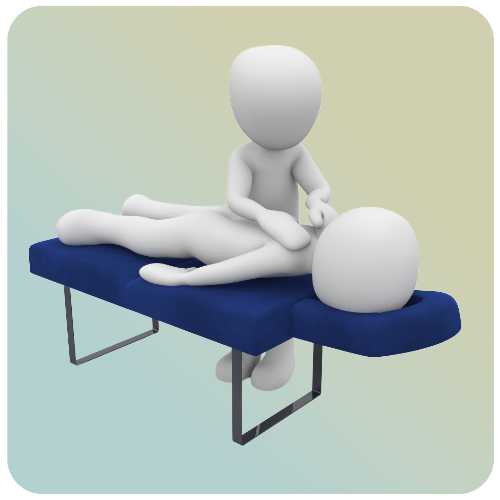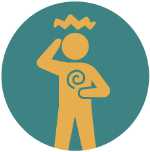Tui Na: More Than a Massage
At first glance, Tui Na (推拿) might look like a typical massage—hands pressing, kneading, and stretching the body. But in Traditional Chinese Medicine (TCM), Tui Na is much more than a method for relaxing tight muscles. It's a clinical treatment used to restore balance, move Qi (气), and support the body's natural healing ability.
The name Tui Na (pronounced "tway-nah") comes from two techniques: tui means "to push," and na means "to grasp." These actions, along with dozens of other techniques like rolling, rubbing, tapping, and pressing, are used in different combinations depending on the patient's condition. Unlike Western massage, which often focuses on muscles and circulation for relaxation or sports recovery, Tui Na works with the meridian system and acupoints—the same network used in acupuncture—to influence the internal organs and correct imbalances.
For example, a Tui Na treatment for lower back pain might include pressing along the Bladder meridian on the back of the legs, releasing tension along the spine, and gently mobilizing the hips. For digestive issues, the practitioner may use rhythmic abdominal techniques to stimulate the Spleen and Stomach systems. Tui Na can be invigorating or calming depending on the goal—strengthening the body's defenses, relieving stagnation, or tonifying weak areas.
Sessions usually begin with an assessment, including questions about sleep, digestion, and energy, along with pulse and tongue diagnosis. You remain fully clothed, and the practitioner works through a sheet or light clothing. Unlike spa massage, oil is rarely used. Instead, the practitioner relies on direct hand techniques to communicate with the body's energy flow.
One unique feature of Tui Na is its adaptability. It can be strong and vigorous for musculoskeletal pain, or soft and soothing for fatigue or insomnia. Pediatric Tui Na is also widely practiced in China, using gentle rolling and tapping motions to help infants and children with common complaints like colic, restlessness, or coughs—without the need for needles or medication.
Modern clinics often combine Tui Na with acupuncture, herbs, or cupping for a more complete treatment. It's particularly useful for chronic tension, joint problems, and conditions where movement is limited but inflammation is not severe. While Tui Na shares some techniques with deep tissue or trigger point massage, its foundation is always energetic, it aims to clear blockages, support Qi, and restore harmony across the entire system.
If you're used to Western massage, Tui Na might feel more specific, sometimes more intense, but deeply therapeutic. Many people leave a session not only with looser muscles, but with clearer energy, improved sleep, or better digestion. It's a hands-on way of bringing the body back into balance—one push and grasp at a time.
Vocabulary Guide:
- Tui Na (推拿): A traditional Chinese medical massage using techniques like pushing, grasping, rolling, and pressing to influence qi and support healing
- Qi (气): Vital energy that flows through the body's meridian system
- Meridian: Channels through which qi travels; used in acupuncture and Tui Na
- Tonify: To strengthen or nourish weakened functions or organs
- Pediatric Tui Na: A gentle form of Tui Na adapted for infants and children.





